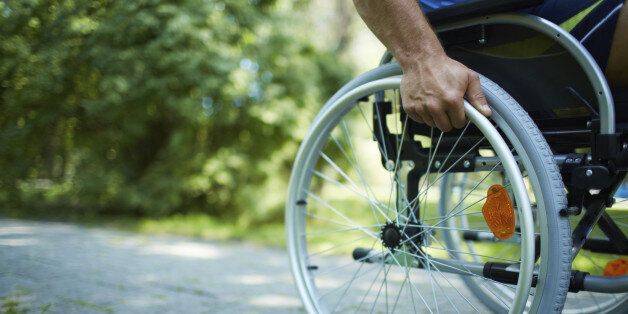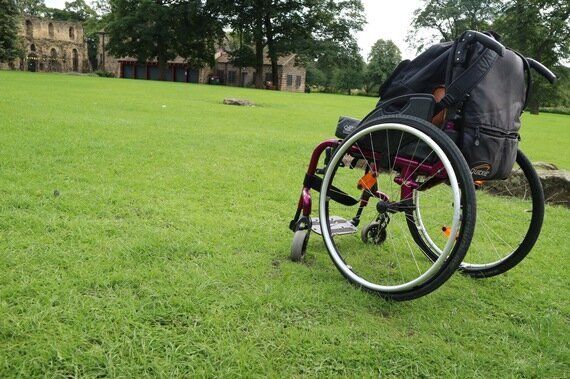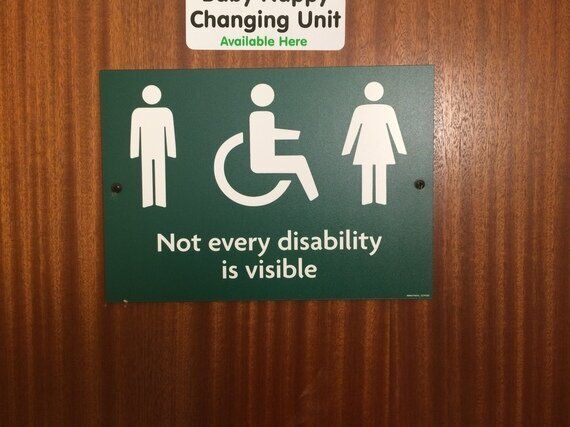

I am a part-time wheelchair user, this means that one day I can use my chair, and the next I can be walking with my stick. Being able to use a wheelchair on a part-time basis allows me to managed my energy levels and reduce pain, allowing me to function more effectively in everyday life. I am exactly the same person whether I use my stick or my chair, so why does the behaviour of others sometimes change?
Over the last few years, I have noticed people act differently to me depending on the equipment that I am using at that time, yet it was when doing my food shopping, of all things, that made me realise what those differences were.

I've noticed that when I use my stick, people don't tend to mind. I sometimes get a few inquisitive looks as they tried to figure out why a 19-year-old is using a walking stick, but apart from that it is fine. People in shops talk to me, telling me how much the items cost and expect me to pay- good job really considering it is my food for the week! Members of the public treat me like everyone else when navigating the pavement which can result in a fall if they bumped into me. This isn't always practical for myself, but then again I would much rather be treated like everyone else. What people don't often realise is that I can very unsteady on my stick, one small knock and that's me on the floor! If I am using my stick in public people may question my use of a blue badge, not necessarily verbally, but odd looks are more than enough evidence for this. Yet by using a blue badge on a good day it means I may be saved from a painful tomorrow, well that is the aim.
On the other hand, when using my wheelchair it can be a very different story! It is extremely common for people to talk to the person I am with, rather than talking to myself, "Hello... I'm down here!". Some people may argue this is due to people not knowing how to respond to an individual in a wheelchair, or them being worried that they would say the wrong thing and offend me. Yet I can assure you I will not be offended when asked to pay for my weekly shop! I am completely capable of talking and communicating with you, just talk to me like you would talk to any other person. Also, when using my wheelchair in public, people often cannot move out of the way quick enough, sometimes moving half a metre away from me. Not only that, people start moving other people out of the way, getting them to completely part the traffic of people in attempt to stop me running them over! Don't get me wrong, this is a very nice gesture and certainly helps when getting where I need to be- just the complete opposite reaction to using my stick, but it can be amusing to see the looks of panic as people get closer to my chair.

However, in my local supermarket the sign on the disabled toilet has recently been changed, making an extremely valid point. It is vital to understand that things like chronic pain (amongst so many others) are invisible to the public, but that does not mean they 'don't qualify' to use an accessible toilet. I feel this can go hand in hand with people who are part- time wheelchair users. Not every disability is visible but not every disability requires the same mobility aids all of the time, changing depending on how the individual is feeling at that exact time. Despite this, I am still me. I can talk to you when I am in a wheelchair and I will not run over your foot, well I will try my hardest not to!
The final observation I have found when using a wheelchair part- time is something I like to call 'the nod'. Now, 'the nod' is hard to describe if you don't use a wheelchair, but it happens when you go past another person in a wheelchair. Both people in the passing (myself and the other wheelchair user) simply nod at each other and smile. I know this sounds simple and it could be argued to happen between any two people when passing on the street, yet when I was in France the only nod I got was from another wheelchair user... So why does 'the nod' occur? This is hard to say for certain, yet it seems to be some kind of mutual respect, maybe "I know what it's like" kind of respect. However, when I've attempted 'the nod' to a fellow wheelchair user whilst using a stick, it didn't have the same effect, so it must be a wheelchair thing!
This blog post first appeared on Life as a Cerebral Palsy Student.
HuffPost UK Lifestyle has launched EveryBody, a new section calling for better equality and inclusivity for people living with disability and invisible illness. The aim is to empower those whose voices are not always heard and redefine attitudes to identity, lifestyle and ability in 2017. We'll be covering all manner of lifestyle topics - from health and fitness to dating, sex and relationships.
We'd love to hear your stories. To blog for the section, please email ukblogteam@huffingtonpost.com with the subject line 'EveryBody'. To flag any issues that are close to your heart, please email natasha.hinde@huffingtonpost.com, again with the subject line 'EveryBody'.
Join in the conversation with #HPEveryBody on Twitter and Instagram.
